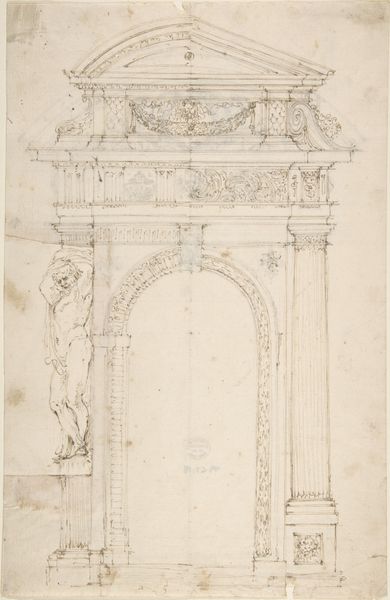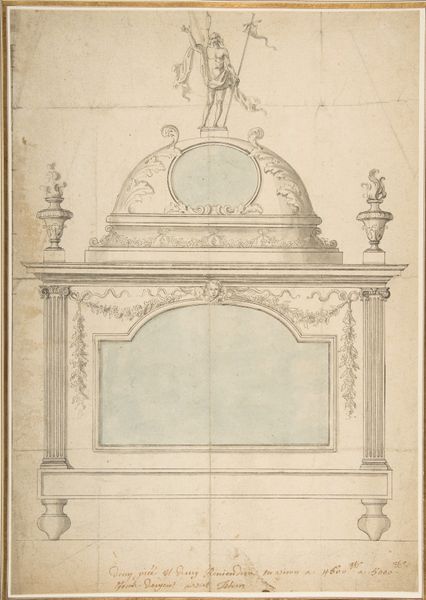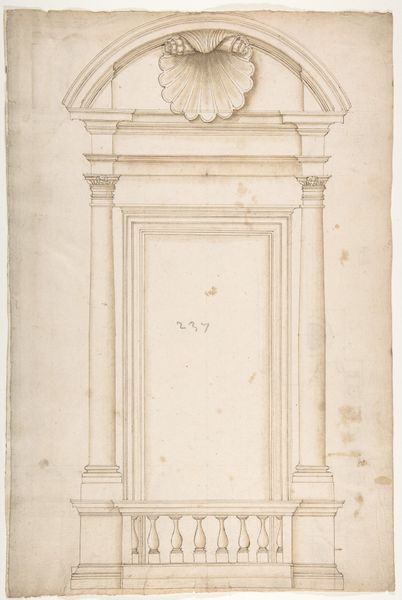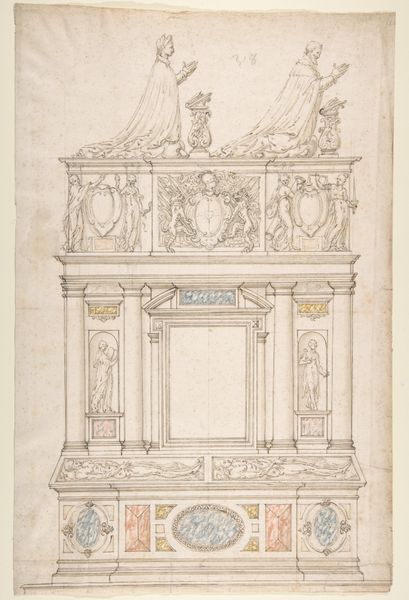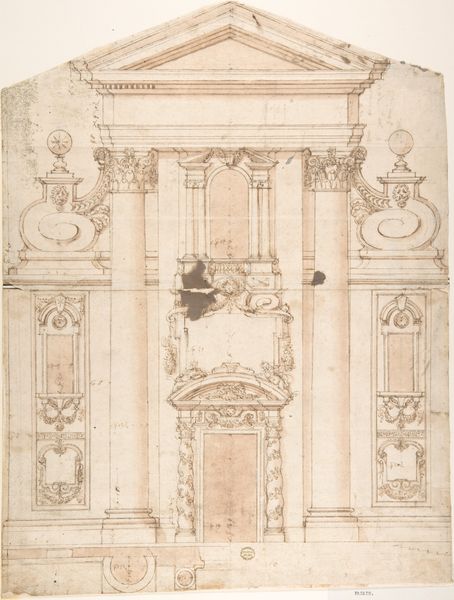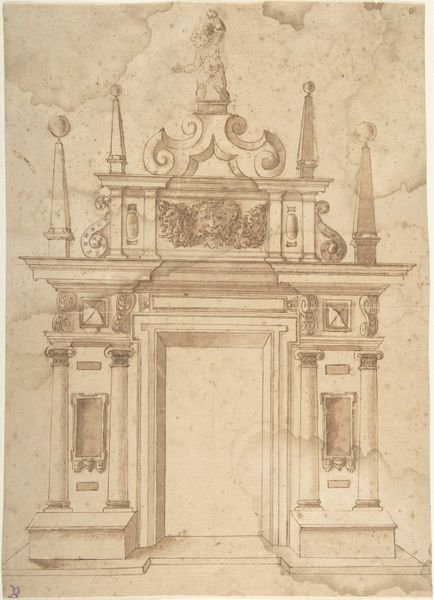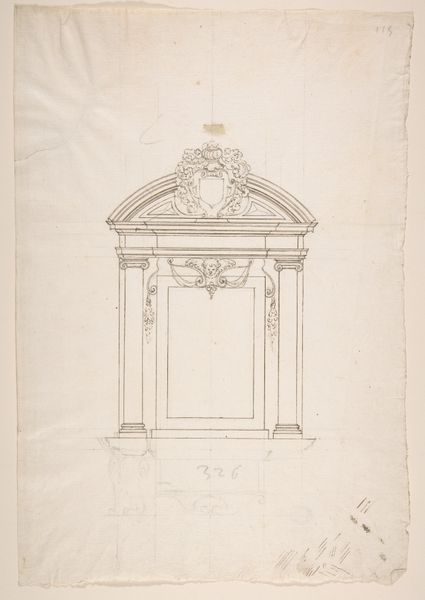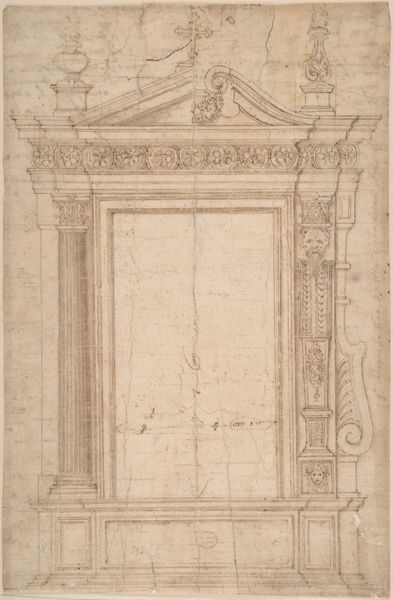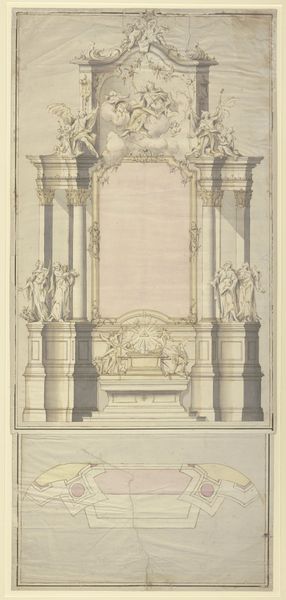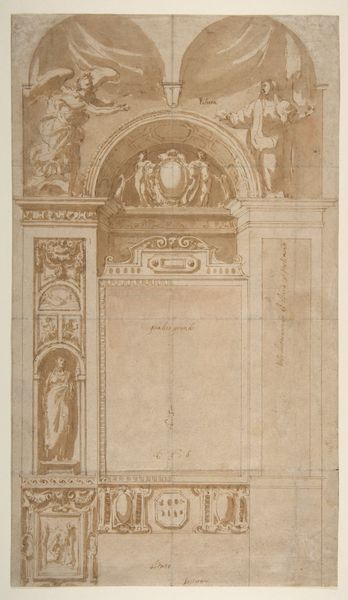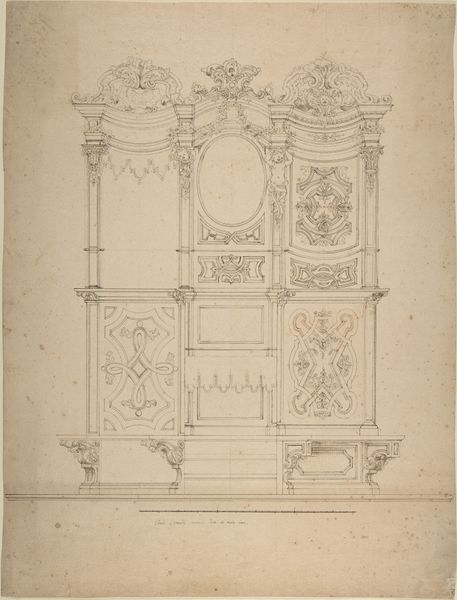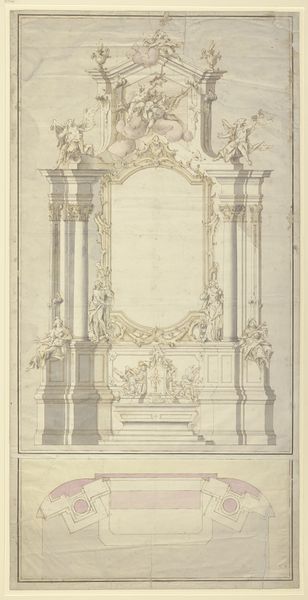
drawing, ink, architecture
#
architectural sketch
#
drawing
#
charcoal drawing
#
form
#
11_renaissance
#
ink
#
line
#
italian-renaissance
#
architecture
Dimensions: sheet: 41.2 × 26.2 cm (16 1/4 × 10 5/16 in.) (irregular) mount: 48.2 × 33.3 cm (19 × 13 1/8 in.)
Copyright: National Gallery of Art: CC0 1.0
Curator: The piece before us is entitled "Design for an Altar," a drawing likely conceived around the 1550s by Giovanni Battista Castello, rendered in ink and charcoal. It exemplifies architectural design within the Italian Renaissance. Editor: Mmm, yes, it’s like a skeletal cathedral distilled down to pure yearning. There’s a ghostly quality about it – delicate but determined. Curator: It reflects a moment steeped in religious reform and the rising influence of humanism, informing artistic practices through new representational techniques. This preparatory sketch captures a unique perspective in the artistic production process of that period. Editor: Absolutely, and this rendering – those meticulous lines – make me feel I’m peering into the artist’s thought process, his internal landscape of devotion. There's a balance, the ethereal dove at the top contrasted against the stoic pillars feels… purposeful. Curator: Consider, too, how these drawings were fundamental in disseminating design ideas across regions. Castello's altar anticipates later baroque flamboyance but is rooted in a measured, Renaissance understanding of form. Editor: Do you think Castello ever imagined it being seen like this, centuries later, outside its immediate religious purpose? Now we engage with it divorced from context, its pure beauty becomes paramount; an icon, in itself. It looks quite grand, as altars should, even on this miniature scale, which brings up the question: was this drawing displayed somewhere like a showroom, to advertise the design perhaps? Curator: Precisely. This artwork not only serves as a visual record of Castello's design process but it invites contemplation on themes of power, spirituality, patronage, and aesthetics, all refracted through the historical prism of Renaissance Italy and also serves as material culture, informing future generations with its rich context. Editor: Gazing at those tiny cherubs makes one reflect on what they symbolize for us today – beauty, grace and hope, themes always relevant in a world seeking connection, which in essence is what every interaction with art attempts. The architecture echoes solidity and transcendence: stone aspiring to the heavens. Curator: Yes, and that duality really captures what made Renaissance art so radical—an embrace of earthly form while perpetually striving for the divine. Editor: Quite lovely! I’m now imagining a score just for this image, filled with dramatic tension and divine inspiration. Thanks for guiding us through that journey!
Comments
No comments
Be the first to comment and join the conversation on the ultimate creative platform.
